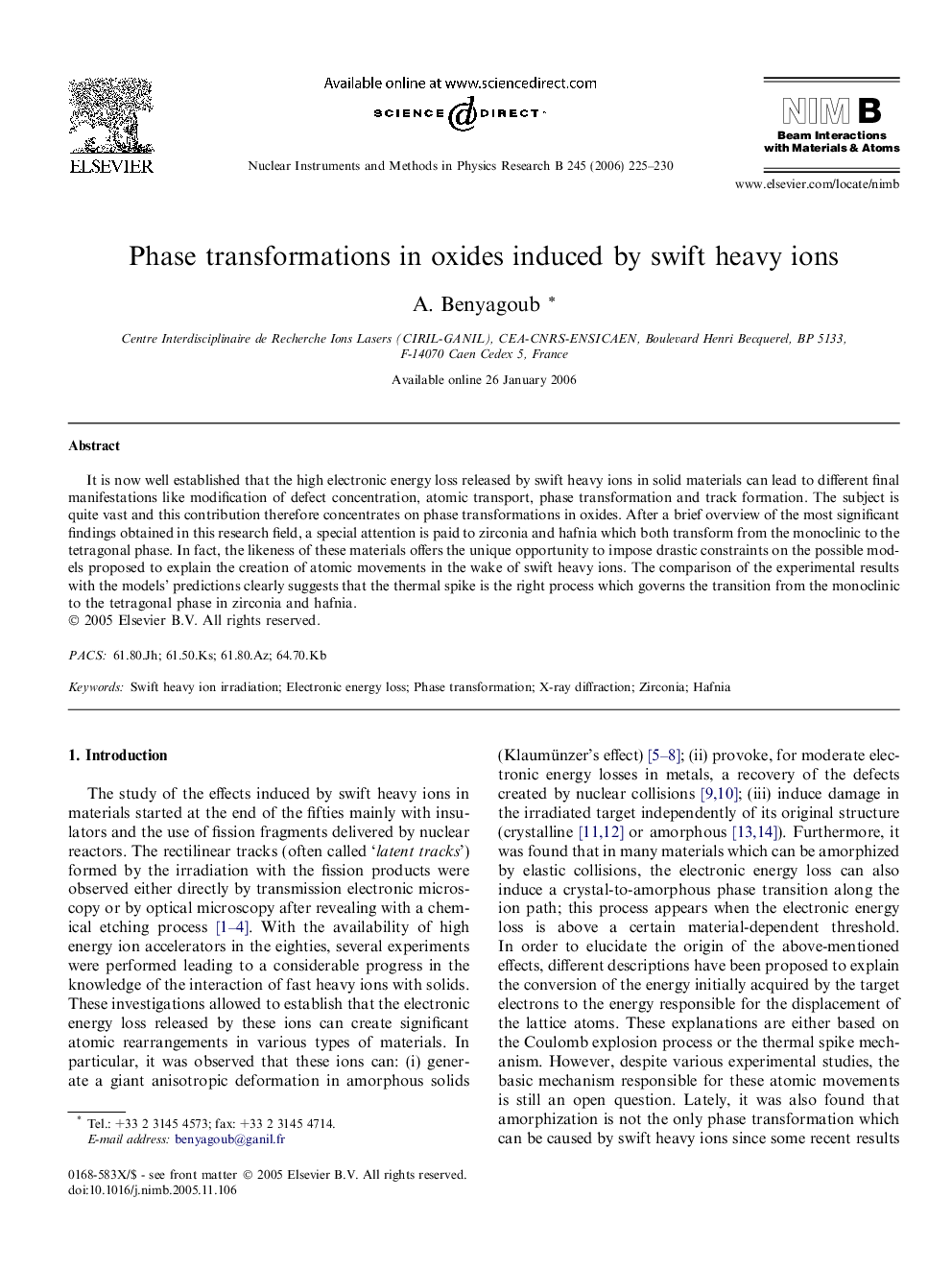| Article ID | Journal | Published Year | Pages | File Type |
|---|---|---|---|---|
| 1687179 | Nuclear Instruments and Methods in Physics Research Section B: Beam Interactions with Materials and Atoms | 2006 | 6 Pages |
It is now well established that the high electronic energy loss released by swift heavy ions in solid materials can lead to different final manifestations like modification of defect concentration, atomic transport, phase transformation and track formation. The subject is quite vast and this contribution therefore concentrates on phase transformations in oxides. After a brief overview of the most significant findings obtained in this research field, a special attention is paid to zirconia and hafnia which both transform from the monoclinic to the tetragonal phase. In fact, the likeness of these materials offers the unique opportunity to impose drastic constraints on the possible models proposed to explain the creation of atomic movements in the wake of swift heavy ions. The comparison of the experimental results with the models’ predictions clearly suggests that the thermal spike is the right process which governs the transition from the monoclinic to the tetragonal phase in zirconia and hafnia.
